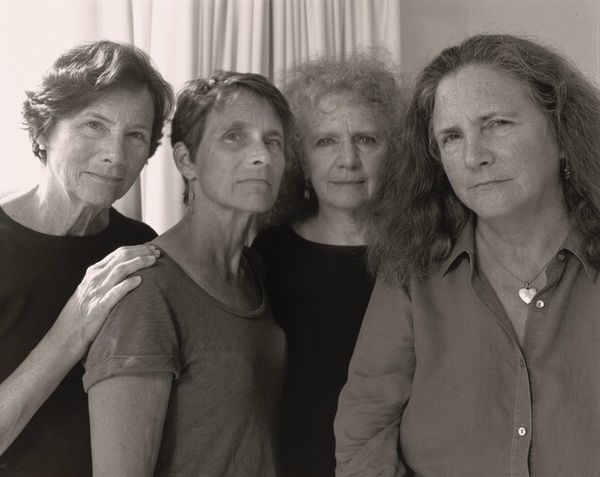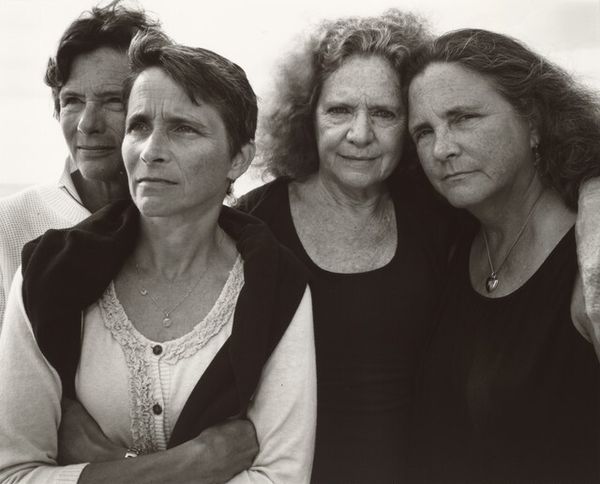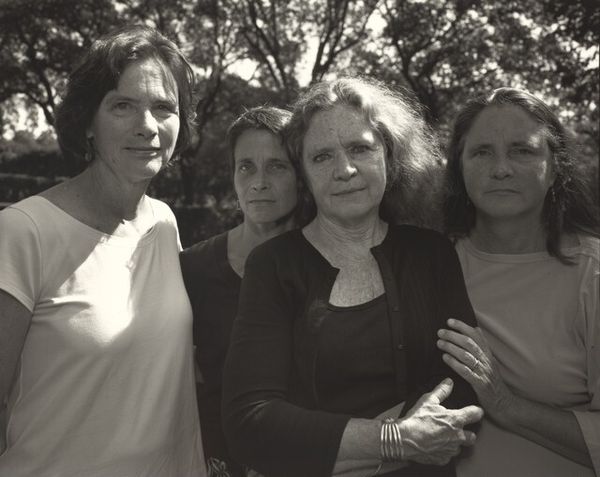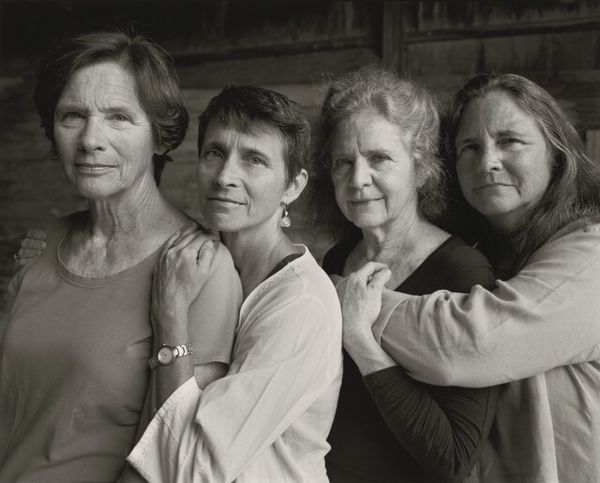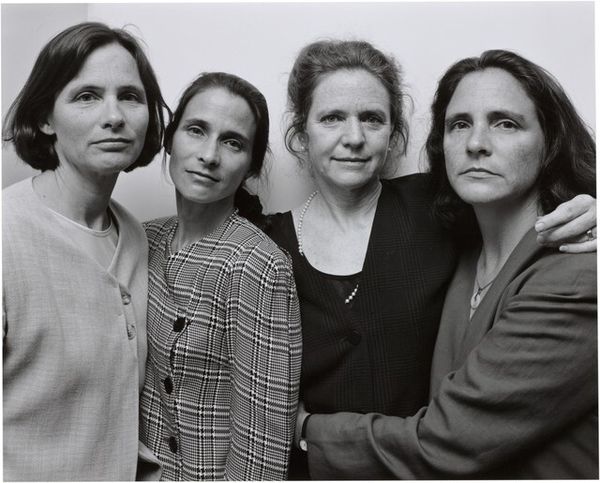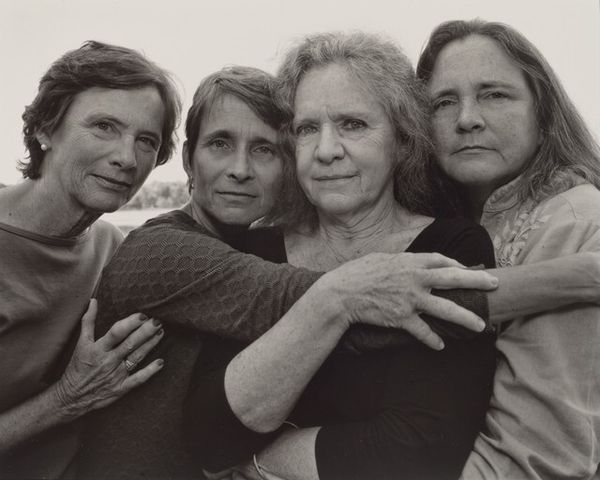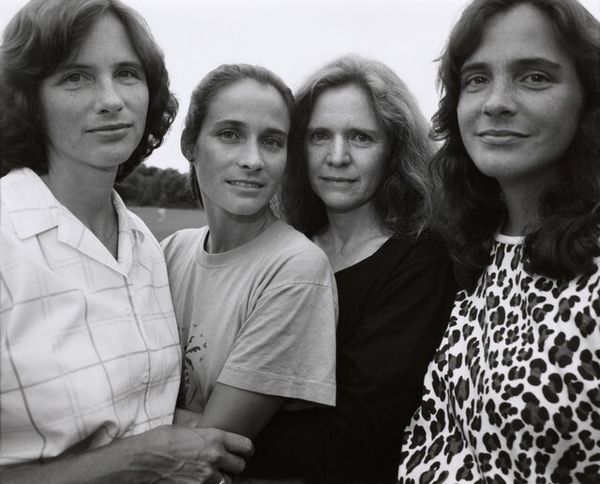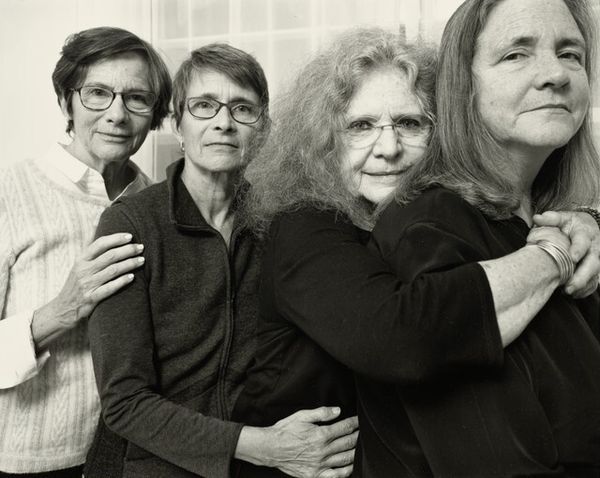
photography, gelatin-silver-print
#
portrait
#
still-life-photography
#
contemporary
#
black and white photography
#
outdoor photograph
#
photography
#
historical photography
#
group-portraits
#
gelatin-silver-print
#
monochrome photography
#
realism
Dimensions: image: 19.7 × 24.5 cm (7 3/4 × 9 5/8 in.) sheet: 20.3 × 25.1 cm (8 × 9 7/8 in.)
Copyright: National Gallery of Art: CC0 1.0
Curator: Nicholas Nixon's "The Brown Sisters," from 2021, captures four sisters in a gelatin silver print. What’s your first impression? Editor: Haunting, yet incredibly familiar. The stark black and white emphasizes every line, every wrinkle—the sheer materiality of aging skin. Curator: The ongoing series, started in 1975, is rooted in notions of time, aging, and the evolving dynamics of sisterhood within the social structures of family and the female gaze. It speaks to the lived experiences of women across decades. Editor: Exactly! Consider the choice of gelatin silver, a process refined in the late 19th century. It suggests a continuity, a layering of time inherent in the very making of the image, almost as if the photographic process mirrors their own enduring connection. Curator: The portraits offer a compelling narrative about representation of women, diverging from traditional patriarchal views and examining agency, power, and resistance through these repetitive portraits. It's about bearing witness, not just to aging but also to a kind of sustained selfhood. Editor: But it's also the labor—Nixon's and theirs. Each year, the ritualistic act of creation: finding the right light, striking a similar pose, the quiet understanding between photographer and subjects. This labor gives substance to time itself. Curator: It's undeniable that the piece carries significant weight through these intersections of personal history and critical self-awareness. I think we can begin to consider its feminist and queer implications when talking about non-traditional images of women throughout time. Editor: And speaking on the labor, the final consumption: the viewing public. The photographs require our presence to continue speaking—and how we perceive it informs how we treat laborers across the gender spectrum and economic status. Curator: Indeed. Nixon's photographs encourage profound thoughts about time, relational identity, representation, and existence itself, encouraging discourse beyond the visual. Editor: Absolutely. It leaves me reflecting on the invisible labor of love and family.
Comments
No comments
Be the first to comment and join the conversation on the ultimate creative platform.
